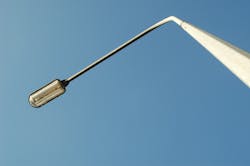Outdoor LED lighting could be increasing our overall energy use
The significant electricity savings of LED streetlights could be backfiring on the world’s efforts to curtail CO2 emissions, because as more locations rush to tap its advantages, overall consumption ironically might be exceeding earlier levels.
That is one of several concerns raised by the International Dark-Sky Association (IDA) in its report Artificial Light at Night: State of the Science 2022, published earlier this month.
Under a section headed, “The ‘greenwashing’ of solid-state lighting,” the report states: “Humans now consume thousands of times more lumens of light than they did in the historic past. There are now signs of what economists call a ‘re-bound effect’ in lighting. This is thought to result from the improved energy efficiency and long lifetime of SSL products. In such conditions, increased consumption of light at night erodes away the expected savings in energy use and reduction of greenhouse gas emissions. Some researchers now question whether SSL is truly ‘sustainable lighting’.”
The report draws on a long list of research references, including a 2017 paper titled “Artificially lit surface of Earth at night increasing in radiance and extent” published in ScienceAdvances.
The Tucson, AZ–based nonprofit IDA covers plenty of other ground that you might expect from an outfit dedicated to preventing artificial light from washing out humans’ and animals’ view of the night sky.
Related article: Sea turtles thrive with amber LED lighting and dark sky advocates rejoice
For example, it raises its core concern that light pollution does indeed threaten dark skies, while also warning that it is undermining the migratory patterns of birds, the pollinating habits of insects, and human health. And it points out that artificial lighting could be exacerbating social injustice because some parts of the population tend to live in excessively lit neighborhoods more than others.
The full report can be downloaded from the IDA website.
IDA runs a program in which it grants a seal of approval to outdoor luminaires that it deems to prevent light from escaping upwards into the night sky. LEDs Magazine recently reported on four locations in England’s Cumbria County that have deployed IDA-certified lights from Thorn Lighting.
MARK HALPER is a contributing editor for LEDs Magazine, and an energy, technology, and business journalist ([email protected]).
For up-to-the-minute LED and SSL updates, follow us on Twitter. You’ll find curated content and commentary, as well as information on industry events, webcasts, and surveys on our LinkedIn page and our Facebook page.

Mark Halper | Contributing Editor, LEDs Magazine, and Business/Energy/Technology Journalist
Mark Halper is a freelance business, technology, and science journalist who covers everything from media moguls to subatomic particles. Halper has written from locations around the world for TIME Magazine, Fortune, Forbes, the New York Times, the Financial Times, the Guardian, CBS, Wired, and many others. A US citizen living in Britain, he cut his journalism teeth cutting and pasting copy for an English-language daily newspaper in Mexico City. Halper has a BA in history from Cornell University.





